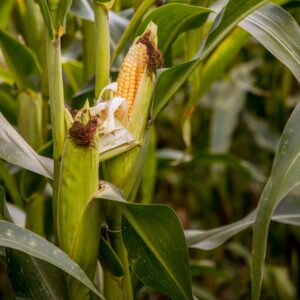
An oil is “essential” in the sense that it carries a distinctive scent, or essence, of the plant.
Essential oils do not, as a group, need to have any specific chemical properties in common, beyond conveying characteristic aromas. They are extracted from flowers, grasses, stems, seeds, leaves, roots, bark, fruit, moss and tree secretions using various means including distillation, expression, extraction, enfleurage, maceration and head space technology. They are used by the flavour and fragrance industry to create, and then manufacture, flavourings for food and beverages, and perfume compounds for cosmetics, household products and fine fragrances, amongst other items.
Source: Michael Gristwood, SAAFFI; www.essential-oil.org; NEDLAC / Fridge report (details under "Websites & publications" heading)
Source: www.saeopa.co.za/about-us/the-industry/industry-profile-southern-africa/
Further reference:
Imported products dominate South Africa’s sales. Most of the imports come from India, USA, eSwatini, UK and China. South Africa exports mainly to the USA, UK, Germany and France. Statistics up to 2018 are provided at www.saeopa.co.za/about-us/the-industry/industry-profile-southern-africa
Source: www.saeopa.co.za/about-us/the-industry/industry-profile-southern-africa and a previous version of A Profile of the South African Essential Oils Market Value Chain (see heading 10). Refer to the Directorate Marketing web pages at www.dalrrd.gov.za to see if an updated version of the publication has been published
For more information on the market trends contact the Southern African Essential Oil Producers Association (SAEOPA) (see “Associations involved” heading). The Indigenous Plant Use Forum (IPUF) is a useful place to engage with what research is happening on plants and their properties.
Various essential oils have been used medicinally at different periods in history. Medical applications proposed by those who sell medicinal oils range from skin treatments to remedies for cancer, and are often based on historical use of the oils for these purposes. Such claims are now subject to regulation in most countries, and have grown correspondingly more vague, to stay within these regulations.
Interest in essential oils has revived in recent decades, with the popularity of aromatherapy, a branch of alternative medicine which claims that the specific aromas carried by essential oils have curative effects. Oils are volatilised or diluted in a carrier oil and used in massage, or burned as incense, for example.
Carrier oil, also known as base oil or vegetable oil, is used to dilute essential oils before they are applied to the skin. They are so named because they carry the essential oil onto the skin. Carrier oils do not contain a concentrated aroma, unlike essential oils, nor do they evaporate like them. There are a range of different carrier oils each with their own individual properties and suitability towards different treatments in aromatherapy. Infused oils are a combination of a carrier oil and various herbs. True carrier oils are generally cold-pressed vegetable oils such as: Sweet almond, grape seed, avocado, olive oil, sesame, evening primrose, sunflower and Jojoba oil.
Source: Michael Gristwood, SAAFFI; www.essential-oil.org; NEDLAC / Fridge report (details under "Websites & publications" heading)
| Sector | Segments | Essential oils |
| Cosmetic | Personal care Soap and detergent Dental care | Lemon Peppermint Orange Patchouli Rosewood Mint Spice Eucalyptus and derivatives |
| Food industry | Soft drink Confectionery Tobacco Candy Processed and canned products Chewing gum | Citrus Spice oleoresins Vanilla Flavour and floral oils Oleoresins Peppermint |
| Pharmaceutical industry | Homeopathy Health-care products Aromatherapy | Orange Citrus Patchouli Lavender Geranium |
Source: Southern African Essential Oil Producers Association (SAEOPA) as cited by DALRRD in its A Profile of the South African Essential Oils Market Value Chain (see "Websites & publications" heading)
Find the publications available from DALRRD under the last heading.
Various municipalities and provincial development agencies have supported essential oil crop interventions to encourage economic activity in rural communities. The Sarah Baartman District Community and Amathole Economic Development Agency are examples.
Department of Trade, Industry and Competition (the dtic) www.thedtic.gov.za
Representatives of SAEOPA have attended various trade missions sponsored by the dtic. These trade missions are largely considered to have been successful with the prospect of orders being placed. However, in the process, SAEOPA identified several issues that need to be addressed in order to secure market access: (i) The need to consolidate production in order to supply sufficient quantities with consistency. The volumes are required in order to get serious international attention. (ii) The need to have basic testing facilities (e.g. Gas Chromatograph) in order to test oils and to be able to give assurances with regards to quality and characteristics.
Department of Science and Innovation (DSI) www.dst.gov.za
The DSI is periodically involved in essential oil production. Its interest in the industry is largely channelled through initiatives like the work of the CSIR (in particularly community projects); the SA Essential Oils Business Incubator; the work of the Institute for Natural Resources (at the University of KwaZulu-Natal University); and the chemical sector incubator (Chemin) situated in Port Elizabeth.
The Department of Health is the governmental body that has ultimate responsibility for this country’s food laws. Visit www.health.gov.za.
Western Cape Department of Agriculture Directorate: Farmer Support Services www.elsenburg.com
Further reference:
See also the “Herbs and spices” page.
Training and research
Companies involved
See also this heading on the “Herbs and Spices” page.
Visit the websites mentioned earlier on this page.
Bizsolutions has an excellent set of interactive computer-based programmes dealing with various aspects of essential oils. These are available from ‘bizsolutions’ by contacting them by email (bizsolutions [at] xsinet.co.za) or telephone (011 447 2757).